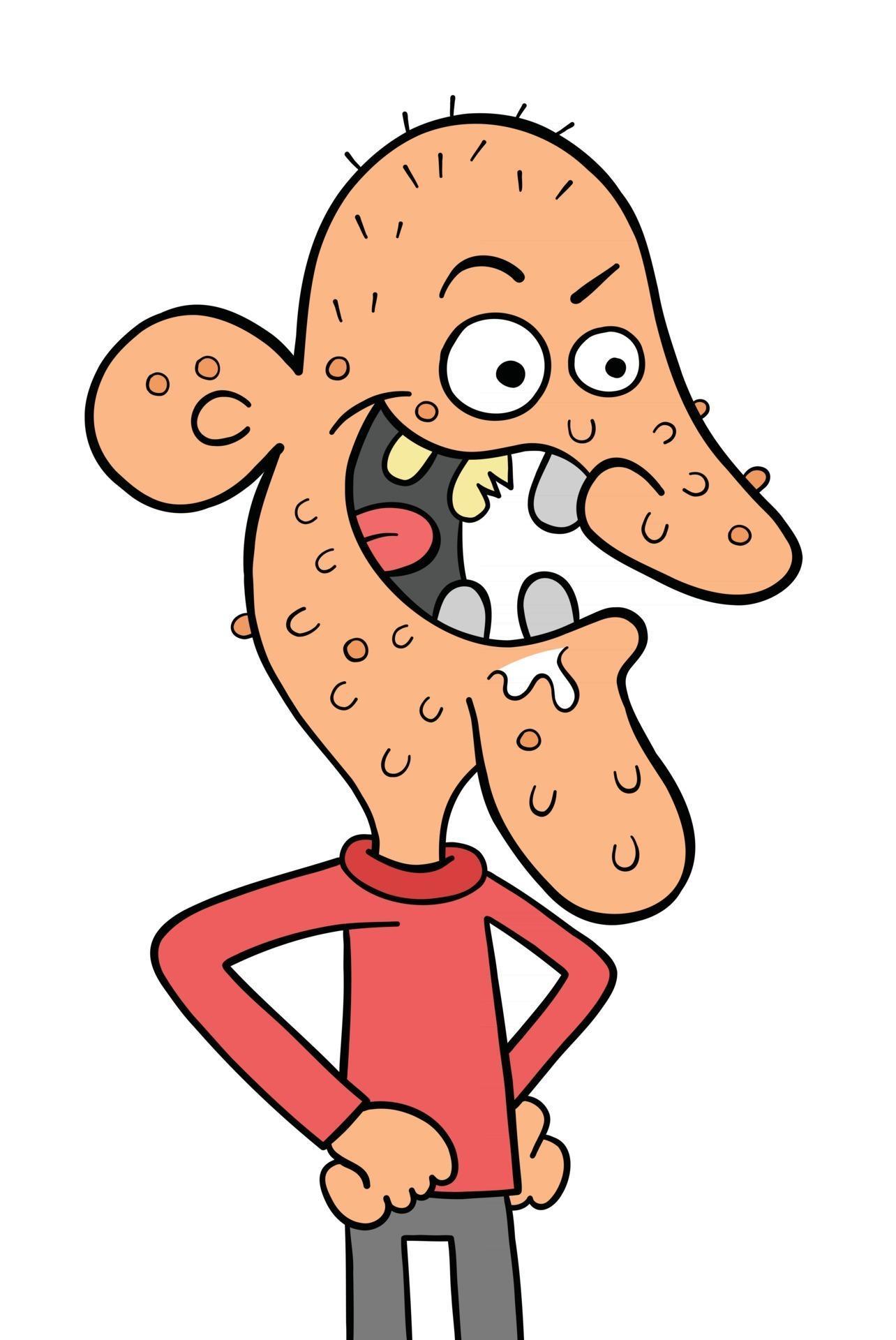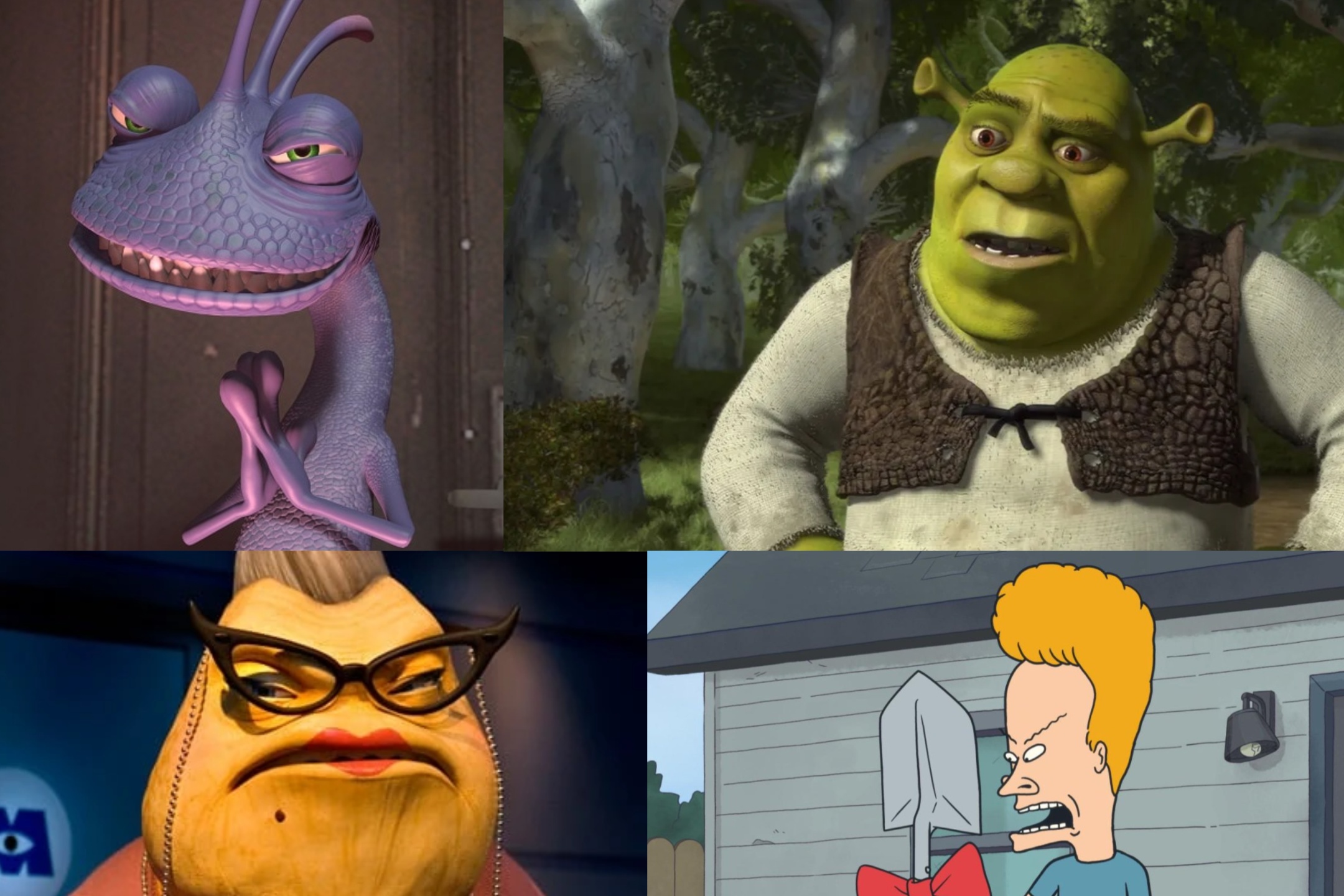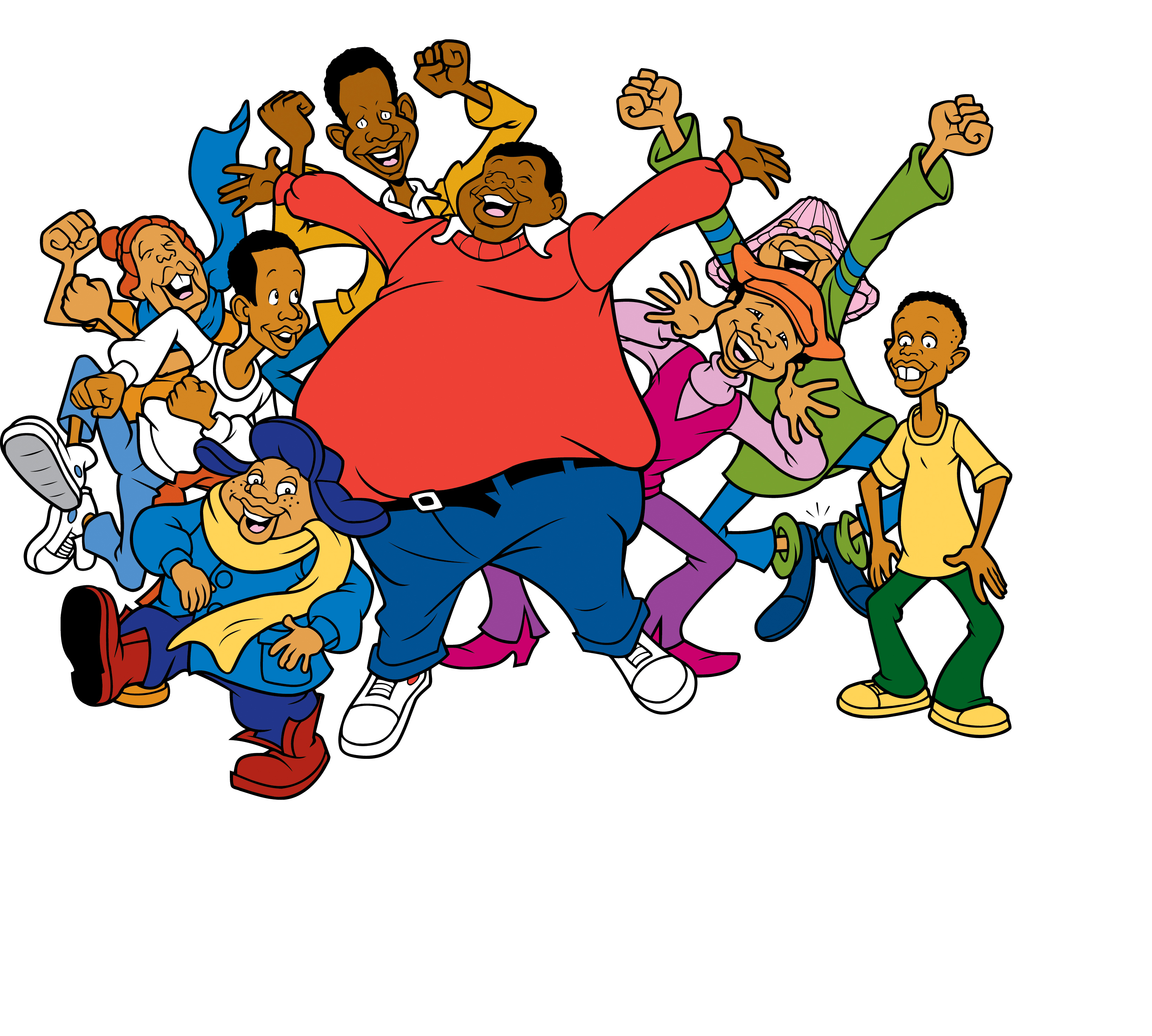Exploring The Charm Of Ugly Fat Cartoon Characters: More Than Just Looks
Have you ever stopped to truly think about the cartoon characters that aren't, well, typically pretty or conventionally slender? It's kind of interesting, isn't it, how some of the most memorable figures on screen are often the ones described as "ugly" or "fat"? This isn't just a random design choice; it often holds a deeper meaning, you know, and it actually matters quite a bit in how we see the world and ourselves.
For many of us, cartoons are a first look at different kinds of people and personalities. So, when we see characters that are, in a way, displeasing to the eye, or perhaps very unattractive and unpleasant to look at, it really makes you wonder why animators choose to draw them that way. It’s not about being mean; it’s about something much more thoughtful, actually.
This discussion isn't just about appearances, though. It's about what these unique figures teach us about acceptance, about judging less, and about finding beauty in places we might not expect. We’ll explore why these "ugly fat cartoon characters" are so important, what messages they send, and how they help shape our views, more or less, in today’s world.
Table of Contents
- The Purpose Behind the Pen: Why "Ugly" Characters?
- Embracing Body Diversity: The Role of "Fat" Characters
- Iconic Examples of Unconventional Charm
- The Impact on Audiences: More Than Just Looks
- Crafting Characters with Depth: A Look at the Design Philosophy
The Purpose Behind the Pen: Why "Ugly" Characters?
When we talk about "ugly" in the context of cartoon characters, we're often referring to features that are, as my text puts it, "offensive to the sight" or "very unattractive and unpleasant to look at." But why would creators intentionally make a character like that? It's a pretty interesting question, you know, and the reasons are actually quite thoughtful.
Animators and storytellers aren't just drawing randomly. They're making choices that serve the narrative, the message, and the overall experience for us, the viewers. So, when a character is drawn to be, say, displeasing to the eye, there's usually a good reason behind it, and that's really important to consider.
Challenging Traditional Beauty Norms
One big reason for creating "ugly" characters is to challenge what we usually think of as beautiful. For a long time, cartoons often showed characters that fit very narrow ideas of attractiveness. But, as a matter of fact, the world isn't just full of perfect-looking people, is it?
By introducing characters that are "offensive to the sense of beauty," creators can make us think differently. They show us that looks aren't everything. A character might be, in a way, "unpleasant to look at," but they can still be brave, kind, or incredibly smart. This really helps to broaden our perspective, which is something we all need, honestly.
It's about saying that worth isn't tied to how attractive someone is. That's a pretty powerful message, especially for younger audiences. It teaches them to look beyond the surface, which is, you know, a very valuable lesson.
Reflecting Reality, Not Just Ideals
Sometimes, "ugly" characters simply reflect the variety of people in the real world. Not everyone is perfectly symmetrical or has a tiny nose. People come in all shapes and sizes, with all sorts of features. So, in a way, these characters can make the cartoon world feel more real and relatable.
When a character is, say, "very unattractive or unpleasant to look at," it might actually make them more believable. It’s like, you know, they're not some idealized version; they're just a person, or a creature, with their own unique look. This kind of representation is important because it shows us that there's beauty and value in every kind of appearance, and that's a good thing, really.
It helps us see ourselves and others more kindly. If all cartoon characters looked perfect, it might make us feel bad about our own quirks, wouldn't it? So, having a mix is pretty essential, to be honest.
Enhancing Storytelling and Personality
An "ugly" appearance can also be a huge part of a character's story or personality. Sometimes, a character is drawn to be "displeasing to the eye" to show their inner struggles, or to make their eventual growth even more impactful. It's like, you know, a visual shorthand for their journey.
Think about characters who start off looking a bit rough around the edges but turn out to be incredibly heroic or kind. Their initial appearance, which might be "offensive to the sight," makes their transformation or their hidden good nature stand out even more. This is, you know, a pretty clever storytelling trick.
It can also make a character funnier or more memorable. A character with exaggerated, "unattractive" features can be inherently comedic, or just plain unique. They stick in your mind because they don't look like everyone else, and that's, like, definitely a good thing for a cartoon character.
Embracing Body Diversity: The Role of "Fat" Characters
Just like with "ugly" characters, the inclusion of "fat" cartoon characters is far from accidental. It's a very conscious decision that speaks volumes about representation and acceptance. These characters are, in a way, just as important as any other, and sometimes even more so, you know.
They bring a different kind of visual to the screen, one that mirrors a broader range of human bodies. This helps us all feel more included and seen. It's about showing that there's no single "right" way for a body to look, and that's a message we really need, frankly.
Breaking Stereotypes and Promoting Acceptance
Historically, "fat" characters in media sometimes fell into tired stereotypes, like being lazy or always hungry. But, as a matter of fact, modern animation is increasingly breaking away from these old ideas. Now, we see "fat" characters who are smart, agile, leaders, and even romantic leads.
This shift is really important for promoting acceptance. When children and adults see diverse body types portrayed positively and with depth, it helps to dismantle harmful biases. It teaches us that someone's body size has nothing to do with their character or their abilities, which is, you know, a pretty fundamental truth.
It's about showing that every body is worthy of respect and capable of amazing things. This is, like, a truly powerful step towards a more inclusive world, and it's something we should all be pretty happy about.
Relatability and Human Connection
For many viewers, seeing "fat" cartoon characters can create an instant sense of relatability. People come in all shapes and sizes, and having characters that reflect this reality makes the stories feel more grounded and authentic. It's just, you know, how the world actually is.
When a character looks a bit more like someone you know, or even like yourself, it builds a stronger connection. You might feel more invested in their journey, or understand their struggles and triumphs better. This human connection is, in some respects, at the heart of good storytelling, and it's definitely something worth aiming for.
It helps us feel less alone and more understood. That's a very comforting feeling, isn't it? So, these characters do a lot more than just fill out the screen; they fill out our sense of belonging, too.
Beyond Physical Appearance
The best "fat" cartoon characters are never defined solely by their size. Their weight is just one aspect of their physical appearance, not their entire identity. Creators make sure to give them rich personalities, complex motivations, and meaningful roles in the story.
This approach teaches us to look beyond the physical. It encourages us to see a character's humor, their bravery, their flaws, and their strengths, rather than just their body shape. It's about understanding that a person, or a character, is a whole package of traits, and their size is just one part of that, you know, big picture.
It really reinforces the idea that true value comes from within. That's a message that resonates with everyone, regardless of their own appearance. It's a pretty universal truth, actually, and it's something we should all remember.
Iconic Examples of Unconventional Charm
When we talk about "ugly fat cartoon characters," it’s easy to think of a few famous faces that perfectly embody this idea. These characters, despite perhaps being "displeasing to the eye" or having a larger build, have captured our hearts and imaginations. They show us, quite clearly, that charm and heroism aren't limited by looks, and that's a very good thing.
They are, in a way, proof that character and personality truly shine brightest. You know, they stand out not because of their conventional beauty, but because of their unique qualities and the stories they tell. It's pretty cool, honestly, how that works.
Lovable Lumps and Unique Shapes
Think about characters like Shrek, for instance. He's a big, green ogre, often described as "unpleasant to look at" or even "threatening" in a way. Yet, he became a beloved hero. His "ugliness" was a central part of his story, and his journey taught us not to judge a book by its cover. He was, in fact, quite a good guy, despite his appearance.
Then there's Homer Simpson, who is, you know, famously a bit overweight and often portrayed in a less-than-flattering light. But he's one of the most iconic and relatable characters in television history. His "fat" appearance is just part of his everyman charm; it doesn't define his capacity for love, stupidity, or occasional brilliance. He's just Homer, basically.
These characters, and many others, show us that unique or unconventional designs can be incredibly effective. They create a visual identity that is hard to forget, and that's pretty important for a cartoon character, you know, to really stick with you.
The Heart of the Character
What makes these "ugly fat cartoon characters" truly resonate is their inner world. It's their kindness, their humor, their flaws, and their triumphs that we connect with, not their physical appearance. Their looks might be "offensive to the sight" to some, but their personalities are often quite beautiful.
For example, characters like Edna Mode from The Incredibles, while not "fat" in the traditional sense, has a very distinct, almost severe look that isn't conventionally pretty. Yet, her confidence, talent, and no-nonsense attitude make her absolutely captivating. She's, like, a powerhouse, and her unique appearance just adds to her iconic status.
It's a reminder that true appeal comes from character depth. These characters teach us that we should look for the good inside, because that's what truly matters. It’s a very simple lesson, but one that’s often forgotten, isn't it?
The Impact on Audiences: More Than Just Looks
The presence of "ugly fat cartoon characters" in media has a much larger impact than just providing a few laughs or a different visual. These characters, in a way, play a significant role in shaping how audiences, especially younger ones, perceive themselves and others. It’s a pretty big deal, honestly, what they show us.
They contribute to a broader conversation about body image, self-worth, and acceptance. This is, you know, a very important topic in today’s world, where looks can often feel like everything. These characters offer a refreshing counter-narrative, which is quite valuable.
Fostering Empathy and Understanding
When children see characters who don't fit the typical mold of beauty or body size, it can help them develop empathy. They learn that someone who is "unattractive and unpleasant to look at" or who has a larger body can still be a hero, a friend, or a loving family member. This helps them understand and accept differences in the real world, too, which is, like, pretty crucial.
It teaches them to look beyond surface-level judgments. Instead of dismissing someone based on their appearance, they learn to consider their actions, their words, and their heart. That's a very valuable skill, you know, for building a kinder society.
These characters essentially show us that everyone deserves respect and understanding, regardless of how they look. It's a simple message, but one that has a profound impact, honestly, on how we treat each other.
Shaping Perceptions of Self-Worth
For viewers who might feel "dowdy and ugly" themselves, or who struggle with their body image, seeing "ugly fat cartoon characters" portrayed positively can be incredibly empowering. It sends a message that it's okay to be different, and that your worth isn't determined by how closely you match some idealized standard of beauty.
It helps to counter the often overwhelming pressure from other media to look a certain way. When you see a character who is "displeasing to the eye" but is celebrated for their courage or kindness, it can help you feel better about your own unique qualities. This is, you know, a pretty important boost to self-esteem for many people.
This representation helps to build a healthier sense of self-worth, reminding us that true value comes from within. It’s a powerful lesson that can stick with people for a very long time, and that's a good thing, really.
A Nod to Authenticity
The inclusion of "ugly fat cartoon characters" also pushes for more authenticity in storytelling. It moves away from presenting a sanitized, perfect version of the world and instead embraces the messy, diverse reality we live in. This makes the stories feel more genuine and relatable, you know.
It's about saying that life isn't always pretty, and neither are all people, but that doesn't make them any less valuable or interesting. This commitment to authenticity helps to create richer, more meaningful narratives that resonate deeply with audiences. It's, like, a very honest approach to art.
This approach also encourages creators to think more broadly about character design and development, pushing them to explore new possibilities beyond conventional aesthetics. It's a good sign for the future of animation, honestly, to see this kind of thought being put into character choices.
Crafting Characters with Depth: A Look at the Design Philosophy
Creating "ugly fat cartoon characters" isn't just about drawing something quickly. It involves a very deliberate design philosophy, where every line and curve serves a purpose. It's about, you know, using visual cues to tell a deeper story about who these characters are and what they represent. This is a pretty complex process, actually.
The goal isn't just to make them look a certain way, but to make that look meaningful. It's about how their appearance contributes to their personality, their role in the story, and the overall message of the show or film. So, it's a lot more than just sketching, really.
Intentional Displeasure: A Design Choice
When animators design a character to be, as my text says, "offensive to the sight" or "displeasing to the eye," it's often a very intentional choice. This "ugliness" can be used to immediately communicate something about the character's personality, their background, or their journey. For instance, a rough appearance might hint at a tough past or a gruff exterior that hides a soft heart.
This isn't about being judgmental; it's a tool for storytelling. A character might be drawn with exaggerated, "unattractive" features to make them stand out, to create humor, or to set them apart from more conventionally attractive characters. It's, like, a visual contrast that really makes you pay attention.
It's also a way to subvert expectations. When a character who is "very unattractive and unpleasant to look at" turns out to be incredibly heroic or kind, it's a powerful moment. This design choice, in a way, sets up that impactful reveal, and that's pretty smart, you know, from a narrative standpoint.
The Art of the Unattractive
There's a real art to making a character "ugly" in a compelling way. It’s not just about making them look bad; it’s about making them look bad in an interesting, memorable, or even charming way. Think about how many beloved characters have exaggerated features that are technically "ugly" but make them incredibly endearing. This is, you know, a very fine line to walk.
The design often focuses on unique silhouettes, distinctive facial expressions, and body language that conveys personality rather than just conventional beauty. This means that even if a character is "offensive to the sense of beauty," they still have a strong visual identity that makes them recognizable and loved. It's a pretty amazing skill, honestly, to pull that off.
This deliberate choice in character design helps to expand our understanding of what makes a character appealing. It teaches us that charisma, humor, and depth can come in any package, even one that is, in a way, "displeasing to the eye." This is, like, a really important lesson for everyone, and it shows the true power of animation. Learn more about character design on our site, and link to this page here.
Frequently Asked Questions about Ugly Fat Cartoon Characters
Why do animators create "ugly" characters?
Animators often create characters that are "offensive to the sight" to challenge traditional beauty standards, to make characters more relatable by reflecting diverse appearances, and to enhance storytelling by visually representing a character's personality or journey. It's a very deliberate artistic choice, you know, to add depth.
What message do "fat" cartoon characters send?
"Fat" cartoon characters typically send messages of body positivity and acceptance. They aim to break harmful stereotypes by portraying characters with larger bodies as intelligent, capable, and heroic, emphasizing that a person's worth is not tied to their physical size. This is, like, a pretty important message for everyone.
Can "ugly fat" characters be heroes?
Absolutely! Many "ugly fat cartoon characters" are indeed portrayed as heroes, protagonists, or beloved figures. Their unconventional appearance often highlights their inner qualities like courage, kindness, or wisdom, proving that heroism and charm come from within, not from conventional looks. It's a very common theme, actually, in a lot of popular stories.

Embracing The Quirk: The Allure Of Ugly Cartoon Characters

Cartoons With Ugly Characters - Infoupdate.org

Fat Cartoon Characters - ClipArt Best